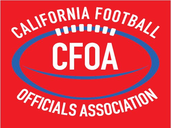REVIEW OF EXTERIONAL AND HEAT RELATED CONDITIONS
Rhonda Hyatt ATC
Best Practices for Game Officials and Coaches:
- Consideration hydration as important as other components of training such as nutrition, strength training and conditioning.
- Be aware of temperature and humidity levels. Change the time of day, practice length, intensity and uniform use as the heat and humidity increases.
- Provide easy access to fluids and remind athletes to drink regularly. Take frequent fluid breaks starting early in the activity and increase the frequency as heat and humidity levels rise.
- Watch out for vague and early signs and symptoms of dehydration in both athletes and game officials and take immediate action.
Dehydration:
Adequate hydration is the key to optimal performance for athletes and officials alike. Pre-participation hydration and fluid replacement during participation not only improves overall performance, but prevents complications associated with dehydration. Fluids are lost primarily thru sweating and the state of dehydration occurs when there is a 2% loss of body weight. The greatest risk for dehydration occurs when the participant is not adequately conditioned or acclimatized to intense prolonged physical exertion in a hot and humid environment.
It is important to understand that even being just a little dehydrated may impact performance. Early signs of dehydration are often misinterpreted as poor performance or execution, or as the normal signs of the exertion associated with the activity. In the early stages of dehydration, the signs may be vague.
The participant may appear:
- Unfocused
- Distracted
- Irritable, or have a short fuse
- Confused and repeatedly makes simple mistakes
- Tired and sluggish
The physical signs of dehydration appear and by this point the participants’ risk of developing and associated heat illness is increasing:
- Dry mouth
- Thirst
- Headache
- Dizziness
- Cramps
- Excessive fatigue
Adequate hydration is ongoing, consuming fluids routinely in the days and hours leading up to the competition is important is important in preventing dehydration. Hydration levels are dependent on many factors including the weight, level of condition and type of activity. The American for sports Medicine and the National Athletic Trainers association make the following general recommendations:
- Participation should consume .7 to 1.07 ounces of fluid per 10 pounds of body weight about 4 hours prior to exercise
- Participants should routinely record their body weight pre and post practice or competition. It is recommended that for every pound lost, 16 ounces of fluid should be immediately replaced.
- Although water is the best fluid replacement, football practice and competitions last several hours and participants should regularly consume fluids that replace important electrolytes. The electrolytes in sports drinks are minerals and ions such as sodium and potassium that are needed for proper neuromuscular function
Heat Related Conditions:
Heat Cramps: Cramping more commonly occurs later into the practice or competition as fatigue and dehydration begin to impact performance. Dehydration impacts the availability of the necessary electrolytes for normal muscle activity. He result is painful cramping in calf or thigh muscles, but severe dehydration can result in cramping of multiple muscle groups in the legs and trunk. Heat exhausting should be suspected in someone experiencing heat cramps. The forcible muscle contractions limit performance and can result in an injury.
Heat Exhaustion: This condition is caused by excessive water loss through sweating and the body is having a difficult time regulating the effects of excessive heat and humidity. The typical signs and symptoms are: pale, cool and sweaty skin, fatigue, dizziness, headache, nausea, vomiting and chills. Heat exhaustion can quickly become a medical emergency, treat the signs seriously and take immediate action to cool the participant and replace fluids. Recognize the early symptoms of dehydration and taking steps to cool down and rehydrate as the competition progresses is important in preventing a serious life threatening situation.
Heat Stroke: This is a life threatening condition. Heat Stroke occurs during vigorous and endurance activities when the body’s heat production exceeds its cooling capacity. The result is a rapid rise in body temperature that if not immediately addressed can lead to death. The significant signs of Heat Stroke to look for are: dry, red and hot skin; the person has stopped sweating, and this seriously compromises their health. Other symptoms of hat stroke include confusion, unstable emotions, nausea, headache, dizziness, and fast respirations. The presence of heat stroke is a medical emergency. Actions require activating and emergency medical response, immediate cooling of the body and replacing fluids to prevent brain damage and death.
Related Articles:
https://www.cdc.gov/extremeheat/athletes.html
http://www.nata.org/practice-patient-care/health-issues/heat-illness
Note: The above articles are for your information only.
Please do not get involved in treating a player who has gone down with the symptoms noted in these articles or, for that matter, any type of an injury. You are a game official, not a medical person at this time. Liability limits what we can do.

